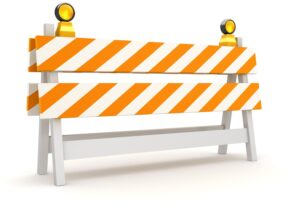Getting Started Is the Hardest Part
Like most things in life, finding where to begin seems to be the most difficult part. This certainly rings true for seeking a diagnosis and treatment for your child with autism.
You may have concerns and have already spoken with your child’s pediatrician before being placed on a waiting list to see a specialist. You may be asking yourself: “But now what? Why is there such a long waiting list? And most importantly, “What can I do for my child while we are waiting?”

Seeing the Signs
First, you may have concerns or are seeing signs of autism, but at what point should we take them seriously?
The symptoms and signs of autism in children can be seen as early as six months old. Families can receive an official autism diagnosis when a child reaches eighteen months old. Unfortunately, due to autism’s varying symptoms, identifying the signs can be difficult, but some common warning signs you may notice are:
-
Avoiding eye contact
-
Being unresponsive to gestures or hearing their name
-
Lacking social skills and is nonverbal
-
Appearing unempathetic
-
Having a strong sensitivity to sound, smell, taste, look, and/or touch
-
Repeating words/phrases continually
-
Exhibiting repetitive behaviors like lining up toys in a specific manner
-
Flapping hands, rocking their body, or any other form of self-stimulating behavior (also called stimming)
The most notable sign of a possible undiagnosed case of autism is missing developmental milestones. The CDC has a comprehensive collection of developmental milestones children should be achieving or reaching for and their respective age ranges.
It is important to understand that missing a milestone or two along the way is not definitive evidence of autism. The truth is that children develop at different rates. Keep a watchful eye on their progress, taking note of any developmental delays you may be seeing, and bring them to the attention of your child’s healthcare provider.
Delays in Autism Diagnosis: Reasons and Solutions
Seeing the signs of autism are common by two or three years of age, and diagnoses can be done by a healthcare professional at 18 months old, yet many children aren’t diagnosed properly until they are five years old. Some even later!
Read about the importance of early intervention for children with autism here.
According to the CDC, despite the fact that 85% of children with autism had developmental issues noted in their records by three years old, only 42% of them were diagnosed at that time. Another 19% of them were diagnosed within two years, and a staggering 39% go on undiagnosed until later in life.
Researchers from the University of Newfoundland found the average wait time from the initial developmental concerns and the actual diagnosis is just shy of three years. Even after contacting a healthcare professional to provide a diagnosis, wait times can be up to 13 months for a screening.
Why Are Autism Diagnoses Often Delayed?

There are many reasons for delays in getting a diagnosis. Sometimes there is a stigma or shame that comes with mental health and special needs. It could also be that your area has a lack of services or proper healthcare providers. Other times, seeing the expected cost could frighten you before really knowing the available options.
There are a lot of obstacles in the way, but they aren’t as scary as they may seem.
The Rates of Autism are Creating an Influx of Patients
The main factor seems to be the rate that autism is growing.
1 in 36 children in the United States are diagnosed with ASD. However, the perceived presence was significantly lower in the 1980s at 1 in 2,500. This is not because autism is climbing at an alarming rate, but due to a better understanding of its symptoms. More people than ever are seeking a diagnosis, resulting in a huge influx of patients asking for an evaluation than ever before.
Letting Go of Denial or Shame
Autism is nothing to be ashamed of, and helping your child should be the top priority. There is nothing wrong with wanting the best for your child and being proactive.
Denying the signs or diagnosis can only hold your child back from their full potential. With diagnosis and treatment comes understanding, love, and acceptance – which every child needs – especially those diagnosed with autism. Don’t just wait and see; speak to a healthcare professional if you have concerns.
Wait Lists and Evaluations
The process of doing a comprehensive ASD evaluation can consist of multiple visits with a multidisciplinary team, including your physician, a psychologist, speech/language pathologists, and child neurologists.
Each specialist brings different expertise to aid in the diagnosis and recommendations for the patient, but this is part of why the wait list times are so long – each child needs and deserves the attention and professional opinions of this team for a proper diagnosis.
This can take a few hours over the span of several visits, but it is important to be done the right way. A proper diagnosis is required for treatment and insurance purposes. If you’re curious about how to get a diagnosis, read over our blog detailing the process.
Lack of Providers
An even larger scale issue is the need for more access to the right providers, especially for families in more rural areas.
According to a team of neurologists from Kennedy Krieger Institute, the wait time for a scheduled appointment is, on average, three and a half months in highly populated cities. However, in less-populated, rural areas where access to specialists and services is more difficult, the wait can be well over a year.
Only 7% of developmental pediatricians practice in rural areas, with some states not even having developmental pediatricians!
This is exactly why Applied ABC is working so diligently to increase our reach and offer in-home services for children in areas where the resources are lacking. See our service area to see if we provide ABA therapy near you.
Cost of Care
Treatment plans vary. The important thing is that the earlier you start, the better the prognosis. Insurance companies are required by law to provide treatment plans for children with an official autism diagnosis. This means that getting help for children with ASD will become more accessible and less burdensome for your family.
However, without an autism diagnosis, your options include waiting for an evaluation or enrolling in private-pay options. While it is strongly recommended to have the diagnosis before seeking treatment, in extreme cases, this route can give your child the earliest intervention and increase their likelihood of living independent and fulfilling lives.
You may have better luck trying another specialist who provides an autism evaluation. If you are located in a more rural area, this may require going where there is a higher population of trained medical professionals.
What You Can Do to Help Your Child While Waiting
Keep doing what works for your child and family. If your child is in a daycare or preschool and it’s going well, then continue as usual. Or, if you are reading with your child and they are enjoying it, continue doing that! Provide support for your child, and in the meantime, do what you think serves them best.
Seek local support and resources. This can be as simple as joining a social group consisting of parents that have children with autism, finding a local center with parent training groups, and doing research with the goal of further understanding your child’s diagnosis and treatment options. Parent training by an ABA provider is typically included in your treatment plan but can be done via private pay if you don’t have a diagnosis. We have a free online resource you can use too!
If your child is aged three or older, local school systems offer special education services. These can include specialized classrooms, speech therapy, social skills classes, and more. Schools do their own testing to assess each child’s needs. These tests are for assessing the need in an educational setting and are not considered an official autism diagnosis.
Continue to reach for age-appropriate milestones, and above all, respond with consistency, understanding, and love.
Sources Cited:
The CDC. Developmental Milestones
The CDC. Delay Between First Concern to Accessing Services
Smith-Young, J., Chafe, R., & Audas, R. “Managing the Wait”: Parents’ Experiences in Accessing Diagnostic and Treatment Services for Children and Adolescents Diagnosed With Autism Spectrum Disorder
Gordon-Lipkin, E. Foster, J., & Peacock, G. Whittling Down the Wait Time: Exploring Models to Minimize the Delay from Initial Concern to Diagnosis and Treatment of Autism Spectrum Disorder





